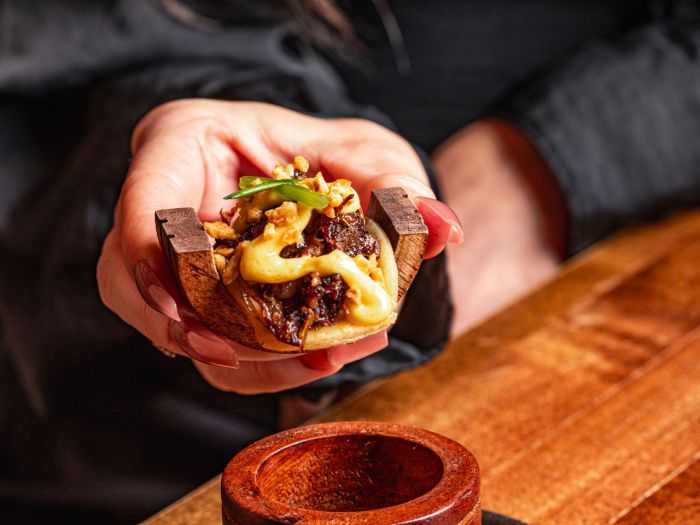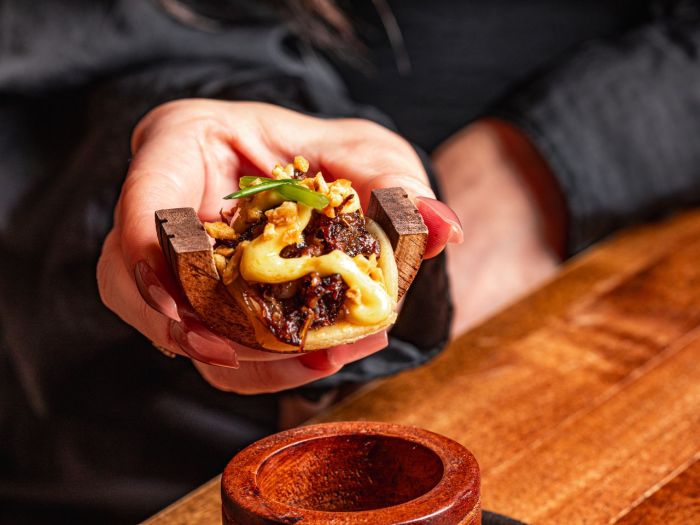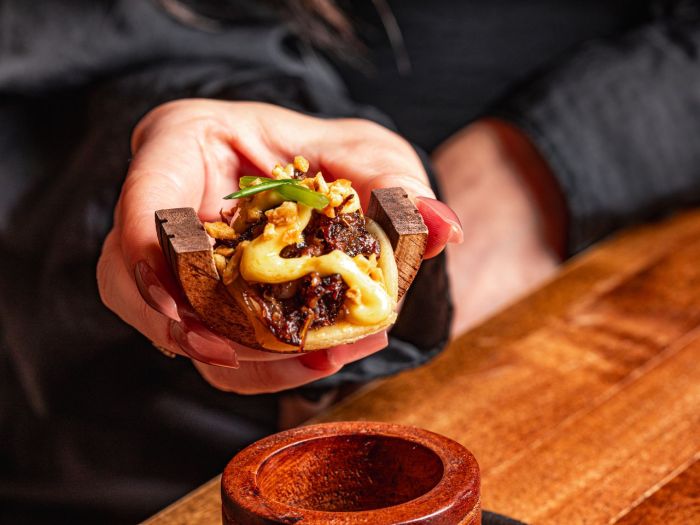Best time to visit Indonesia? This guide delves into the ideal time for your Indonesian adventure, exploring everything from weather patterns and peak seasons to festivals, accommodation, and transportation. We’ll uncover the optimal period to experience the vibrant culture, stunning landscapes, and diverse experiences Indonesia offers, while considering the pros and cons of popular times and lesser-known alternatives.
Indonesia boasts a tropical climate, but regional variations mean the best time to visit differs based on your destination. Whether you’re dreaming of pristine beaches in Bali or exploring ancient temples in Java, understanding the nuances of Indonesia’s seasons is key to planning a memorable trip.
Introduction to Indonesia’s Seasons and Weather Patterns

Indonesia’s diverse archipelago boasts a tropical climate, but variations exist across its numerous islands. Understanding these differences is crucial for planning a trip, as weather can significantly impact your experience. The country experiences two main seasons, characterized by the wet and dry seasons, influenced by the monsoon winds. These seasons, however, aren’t uniform across the entire nation, leading to distinct weather patterns across different regions.The monsoon winds play a pivotal role in shaping Indonesia’s weather.
The shift in wind direction between the northeast and southeast monsoons creates distinct wet and dry seasons. The intensity and duration of these seasons vary geographically, influencing rainfall patterns and temperatures across the islands. This variability is a key factor in determining the best time to visit specific destinations.
Climate Variations Across Regions
Indonesia’s climate is primarily tropical, but the country’s vast size and diverse topography lead to significant variations. The climate is influenced by the surrounding ocean, altitude, and proximity to mountain ranges. For example, areas near the equator tend to have higher humidity and rainfall throughout the year, while higher elevations often experience cooler temperatures and less rainfall. Coastal areas generally experience warmer temperatures than inland regions, and these differences are noticeable even within a single island.
Typical Weather Patterns in Popular Tourist Destinations
Understanding the typical weather patterns in popular tourist destinations is essential for planning your trip. For instance, Bali, known for its beautiful beaches and vibrant culture, experiences a relatively consistent warm climate year-round. However, there are differences in rainfall. Java, with its diverse landscapes, showcases a mix of tropical climates with differing rainfall intensities. Sumatra, another popular destination, exhibits similar characteristics, with variations in rainfall and temperature.
Rainfall Patterns for Each Region and Time of Year
The rainfall patterns across Indonesia are strongly influenced by the monsoon seasons. The northeast monsoon, typically from November to April, brings heavy rainfall to the northern parts of the archipelago, while the southeast monsoon, generally from May to October, brings rain to the southern regions. The intensity and duration of these rainy seasons vary by location. For example, areas closer to the equator might experience rain throughout the year, whereas destinations further away from the equator may have a more pronounced wet and dry season.
Average Temperatures and Rainfall for Major Islands
This table provides a general overview of average temperatures and rainfall for major Indonesian islands during different months. This information is a useful guideline for travelers but should not be considered definitive.
| Island | Month | Average Temperature (°C) | Average Rainfall (mm) |
|---|---|---|---|
| Bali | January | 27 | 250 |
| Bali | July | 28 | 100 |
| Java | April | 28 | 300 |
| Java | October | 27 | 150 |
| Sumatra | June | 29 | 180 |
| Sumatra | December | 28 | 350 |
Analyzing Peak Tourist Seasons
Indonesia, with its diverse landscapes and rich culture, attracts millions of tourists annually. Understanding the best time to visit is crucial for maximizing your experience. This section delves into the peak tourist seasons, comparing them to off-peak periods, and examining the impact of crowds on popular destinations.The Indonesian archipelago boasts a tropical climate, with distinct wet and dry seasons impacting weather patterns across different islands.
This variability, combined with the country’s many cultural festivals and events, creates specific peak tourist periods. Knowing these patterns can help you plan your trip to avoid the most crowded times and enjoy the destinations to the fullest.
Popular Tourist Seasons
Indonesia’s most popular tourist seasons are generally characterized by pleasant weather, ideal for outdoor activities and exploration. These periods often coincide with the dry seasons, offering optimal conditions for visiting beaches, national parks, and other natural attractions. The dry season, usually from April to September, is the most common peak time.
Peak Season Advantages and Disadvantages
Visiting during peak seasons in Indonesia offers several benefits. The weather is generally favorable, and many attractions are fully operational, with numerous activities and events. However, this also means higher prices for accommodation, flights, and tours. Crowds can significantly impact your experience, leading to longer queues and potentially hindering your ability to fully immerse yourself in the local culture.
Finding available accommodations or transportation during peak times might require more advanced planning.
Off-Peak Season Advantages and Disadvantages
Conversely, visiting during off-peak seasons, such as the wet season, can offer significant advantages. Accommodation and transportation costs are typically lower, and you’ll encounter fewer crowds. This allows for a more intimate and authentic experience, enabling you to connect more deeply with the local culture and surroundings. However, the weather might be less predictable, with potential for rain and less ideal conditions for outdoor activities.
Impact of Crowds on Tourist Experiences, Best time to visit indonesia
Crowds can negatively affect the tourist experience in popular destinations. The sheer number of visitors can lead to longer wait times for attractions, making it harder to fully appreciate the sights and sounds of the destination. In some cases, crowds might even deter tourists from experiencing certain attractions, and can create pressure and stress for both tourists and locals.
For instance, crowded beaches can diminish the relaxing atmosphere, while busy markets might not offer the same level of personal interaction.
Summary Table
| Season | Advantages | Disadvantages |
|---|---|---|
| Peak Season (April-September) | Pleasant weather, attractions fully operational, numerous activities | Higher prices, crowded conditions, longer queues, potentially less immersive experience |
| Off-Peak Season (October-March) | Lower prices, fewer crowds, more intimate experience, better chance of connecting with local culture | Potentially less favorable weather (rain), some attractions might have limited hours, less ideal conditions for outdoor activities |
Evaluating Festivals and Events
Indonesia’s vibrant culture is deeply intertwined with its numerous festivals and events. These celebrations offer a captivating glimpse into the nation’s rich heritage, traditions, and artistry. Understanding these events is crucial for planning the best time to visit specific regions and experiencing the country’s unique charm. From elaborate processions to lively performances, these events often draw large crowds and significantly influence the local economy.Festivals and events are more than just entertainment; they are powerful cultural touchstones, often marking agricultural cycles, religious observances, or historical milestones.
Understanding their significance allows visitors to connect with the local community on a deeper level, enriching their travel experience and contributing positively to the local economy.
Major Cultural Festivals and Events
Indonesia boasts a kaleidoscope of festivals, each with its own unique character. These events are deeply ingrained in the cultural fabric of the country and often celebrate specific aspects of Indonesian life, such as harvest, religious ceremonies, or local traditions. Recognizing these festivals allows travelers to choose the right time for their visit.
- Nyepi (Balinese New Year): Celebrated on the Hindu lunisolar calendar, Nyepi is a day of silence and reflection. This unique festival, observed primarily on the island of Bali, involves a complete cessation of all activities from sunrise to sunset. It is a time for spiritual renewal and introspection, and visitors are encouraged to respect the local customs. The festival typically lasts for one day and takes place in Bali.
- Idul Fitri (Lebaran): This significant Muslim festival marks the end of Ramadan. Celebrated throughout Indonesia, Lebaran is a time of joyous gatherings, family visits, and forgiveness. It is a period of intense activity and often leads to massive travel across the country as families reunite. The duration of Lebaran varies slightly based on the lunar calendar, but it typically lasts several days.
- Semana Santa (Holy Week): In predominantly Catholic areas, like Flores and parts of Sulawesi, Holy Week is a period of religious observances and festivities. This festival includes processions, religious services, and community celebrations, creating a vibrant atmosphere. The week-long celebration typically centers around churches and religious sites within the region.
Impact on the Best Time to Visit
The timing of these festivals plays a crucial role in deciding the optimal time to visit specific regions. For example, visiting Bali during Nyepi may not be ideal for those seeking vibrant activities, while the bustling atmosphere during Lebaran could be overwhelming for some.
Planning a trip to Indonesia? The best time to visit is generally during the dry season, avoiding the monsoon months. While you’re dreaming of lush Indonesian landscapes, you might also be interested in some incredible road trips in Pakistan. Check out the best road trips in Pakistan for some serious adventure. Ultimately, the best time to visit Indonesia is when you’re most excited to explore its stunning natural beauty.
| Festival | Location | Impact on Tourism | Impact on Local Community |
|---|---|---|---|
| Nyepi | Bali | Significant decrease in tourism activity due to the day of silence. | Deepens the spiritual significance of the event for locals. |
| Idul Fitri | Throughout Indonesia | Increased travel and demand for accommodation, potentially leading to higher prices. | Reinforces family ties and strengthens community bonds. |
| Semana Santa | Flores, Sulawesi | Moderate increase in tourism activity, particularly around religious sites. | Provides a platform for showcasing local traditions and faith. |
Impact on Tourism and Local Communities
These festivals significantly impact tourism and local communities. The influx of tourists during certain periods can boost local businesses, but the intensity of these periods also leads to potential strain on infrastructure and resources. The events also create opportunities for cultural exchange and strengthen community bonds, promoting a sense of pride and shared identity. For instance, during Lebaran, local businesses experience a surge in sales as families prepare for the festivities, and the community experiences a sense of unity and shared celebration.
Exploring Accommodation and Activities: Best Time To Visit Indonesia
Indonesia’s diverse landscapes and vibrant culture attract millions of visitors annually. Understanding how the best time to visit affects the travel experience, from accommodation to activities, is crucial for planning a memorable trip. This section delves into the impact of seasonal variations on the availability and prices of accommodations, and how different weather conditions influence popular activities and experiences.
Planning a trip to Indonesia? The best time to visit generally falls between April and October, when the weather is pleasant and the rain is minimal. However, if you’re also a fan of sailing and want to learn from the pros, checking out Daisy Kelliher’s Bravo Below Deck Sailing advice daisy kelliher bravo below deck sailing advice might give you some extra insights on the best conditions for your sailing adventure.
Ultimately, the ideal time to visit Indonesia depends on your personal preferences and the type of experience you’re hoping for.
Impact of Season on Accommodation
Seasonal fluctuations significantly impact accommodation availability and pricing. During peak tourist seasons, hotels and guesthouses fill up quickly, leading to higher prices and limited choices. Conversely, off-season periods offer more affordable options and greater flexibility in booking. For example, during the dry season in Bali, popular villas and resorts often sell out weeks, or even months, in advance, whereas the shoulder seasons offer a wider selection and potentially better deals.
Popular Activities and Seasonal Variations
Indonesia offers a plethora of activities, from trekking through lush rainforests to exploring ancient temples. The availability and suitability of these activities are greatly influenced by the time of year. For example, trekking in Mount Bromo is best enjoyed during the dry season when the trails are less muddy and visibility is better. Conversely, the wet season, with its lush greenery and vibrant flora, might offer unique experiences, but the trails can become difficult to navigate.
Weather and Crowds Impact on Activities
Weather conditions and crowds significantly influence the enjoyment of specific activities. For example, surfing in Bali is a popular activity, but heavy rain and strong winds during the wet season can make it less enjoyable or even unsafe. Likewise, visiting Komodo National Park during the wet season can limit wildlife viewing opportunities, while peak seasons bring in a large number of tourists, potentially creating crowds and impacting the experience.
Best Activities by Month
| Month | Best Activities | Weather Considerations |
|---|---|---|
| March-May (Dry Season) | Hiking in Mount Bromo, trekking in Komodo National Park, surfing in Bali, exploring temples in Java | Generally sunny and dry. Ideal for outdoor activities. |
| June-August (Dry Season) | Diving in Raja Ampat, exploring the beaches of Lombok, trekking in Sumatra, visiting Flores | Continues to be dry, but potential for cooler evenings. |
| September-November (Wet Season) | Exploring rainforests, visiting local markets, enjoying water sports (with caution), visiting cultural performances. | Higher chance of rain, but the scenery is lush and vibrant. Be prepared for potential delays or closures of some activities. |
| December-February (Wet Season) | Water activities, exploring waterfalls, and observing local life in rural areas. | High humidity and potential for heavy rain. Be aware of possible flooding and limited visibility. |
Examining Accommodation Costs and Availability
Indonesia’s diverse landscapes and vibrant culture attract millions of tourists each year. Understanding the fluctuations in accommodation costs and availability is crucial for planning a trip that fits your budget and preferences. Different seasons and popular destinations have varying impacts on prices and room availability.Accommodation costs, like many other aspects of travel, are influenced by demand. Peak seasons, typically coinciding with favorable weather and major events, experience higher prices and limited availability.
Conversely, off-peak seasons often offer more affordable rates and greater choice. Strategic planning can help you secure a suitable stay at a competitive price.
Accommodation Price Fluctuations
Accommodation prices in Indonesia vary significantly depending on the time of year. Popular tourist destinations, particularly during peak seasons, experience substantial increases in rates. These increases are often a direct result of higher demand and limited availability. Conversely, off-peak seasons usually present a wider selection of options and more competitive pricing.
Availability of Accommodation Types
The availability of different types of accommodation, such as hotels, guesthouses, and homestays, varies across the seasons. Hotels, often the most luxurious and sought-after option, experience greater demand and lower availability during peak seasons. Guesthouses and homestays, often more budget-friendly, might still see limited availability during peak times but tend to have more options during the off-season. The availability of these types of accommodation often depends on the specific location and the popularity of the destination.
Finding Deals and Discounts
Savvy travelers can often find deals and discounts on accommodation outside of the most popular times to visit. Booking in advance, especially during the off-season, can frequently yield significant savings. Websites specializing in travel deals and discounts often feature options for accommodation in Indonesia at lower rates compared to peak seasons. Taking advantage of these opportunities can make your trip more budget-friendly and allow you to experience the destination with greater freedom.
Estimated Accommodation Costs
The following table provides an estimated range of accommodation costs for different months in popular Indonesian locations. Note that these are estimates and actual prices may vary depending on the specific hotel, guesthouse, or homestay, location, and room type.
| Month | Estimated Cost (USD) | Location | Notes |
|---|---|---|---|
| June | $50-150 | Bali | Shoulder season, good for exploring. |
| July | $60-180 | Jakarta | More affordable compared to peak season |
| August | $70-200 | Lombok | High demand for beach vacations |
| September | $65-190 | Borobudur | Good for temple visits and nature tours |
| October | $75-220 | Komodo | Season for exploring the island |
Considering Transportation and Accessibility
Indonesia’s diverse archipelago presents unique transportation challenges, and the best time to visit is significantly impacted by accessibility and travel conditions. Understanding how weather patterns affect transportation, and how travel times and costs fluctuate throughout the year, is crucial for a smooth and enjoyable trip. Choosing the right time also means factoring in the accessibility of various destinations and the potential for delays.
Impact of Weather Conditions on Transportation Options
Weather conditions directly influence transportation options across Indonesia. Heavy rainfall can lead to road closures and flight delays in certain regions, particularly during the rainy season. Flooding, landslides, and strong winds can disrupt sea travel. For example, during the monsoon season, ferries may be suspended between islands, while some airports might experience disruptions. Understanding these weather-related impacts is vital to planning your itinerary.
Accessibility to Different Destinations Changes with the Seasons
The accessibility of destinations varies with the time of year. Certain islands or regions might become more isolated during the rainy season due to flooding or challenging road conditions. Conversely, some areas become more accessible during the dry season when the weather allows for easier travel. For instance, trekking routes in mountainous regions might be impassable during periods of heavy rainfall.
Average Travel Times and Potential Delays During Different Periods of the Year
Travel times fluctuate depending on the season. During peak tourist season, flights and ferries can experience higher passenger loads, resulting in longer travel times and potential delays. For example, during the dry season, travel between Bali and Java is often quicker, but the rainy season can introduce delays and potentially cancelations. Average travel times can be significantly impacted by weather conditions.
Transportation Costs May Change According to the Time of Year
Transportation costs can vary depending on the time of year. During peak seasons, flight and ferry prices tend to increase due to higher demand. For example, a flight from Jakarta to Bali during the peak holiday season may be more expensive than a flight during the shoulder season. This can significantly affect your budget, so careful planning is essential.
Transportation companies adjust prices to accommodate the fluctuation in demand.
Exploring Cultural and Religious Considerations
Indonesia’s vibrant tapestry of cultures and religions significantly influences the best time to visit. Understanding these aspects allows travelers to immerse themselves in authentic experiences and avoid potential disruptions. Religious observances and cultural festivals can shape the atmosphere and activities available, and respecting local customs is crucial for a positive journey.Understanding the interplay between religious holidays, cultural celebrations, and travel plans is vital for a meaningful Indonesian experience.
Respecting local customs and traditions fosters a more enriching and harmonious interaction with the Indonesian people.
Religious Holidays and Festivals
Religious holidays significantly impact travel plans. Major Muslim holidays, such as Eid al-Fitr and Eid al-Adha, often see increased local activity and potential travel restrictions or closures of some businesses and attractions. Buddhist and Hindu celebrations also have similar effects, influencing crowds and event schedules. For example, during large religious festivals, accommodations and transportation may be more expensive and in higher demand.
Consider these factors when planning your trip, and researching specific dates of important events in advance.
Cultural Events
Many cultural events are time-bound, creating opportunities for unique experiences only available during specific periods. The annual “Karnaval” in various cities showcases vibrant parades and festivities, while specific ceremonies, such as the “Upacara Adat” (traditional ceremonies), are often scheduled during particular months. These events offer a chance to witness the rich traditions and arts of the region. Researching local calendars or contacting tourism offices can provide accurate information about cultural events.
Local Customs and Traditions
Indonesia’s diverse local customs and traditions are integral to the travel experience. Dressing modestly, especially when visiting religious sites, is important. Respecting local norms, like removing shoes before entering homes or certain temples, is essential for a positive interaction. Different regions have different norms, and understanding the customs of the specific area you are visiting is vital.
For example, some regions might have specific etiquette around gifts or greetings.
Etiquette During Religious or Cultural Celebrations
Appropriate etiquette during religious or cultural celebrations ensures a respectful and harmonious experience. Dressing modestly, especially when visiting religious sites, is crucial. Being mindful of local customs related to food, drink, and conversations is essential. If unsure about a custom, politely inquiring can often lead to a better understanding. Always seek guidance from local guides or ask locals for clarification.
Planning your Indonesian adventure? The best time to visit really depends on your tolerance for crowds and rain. For in-depth info on the ideal weather patterns, check out this great resource on what to read where to find articles and blogs that offer valuable insights into the best time to experience Indonesia’s diverse landscapes and vibrant culture.
Ultimately, doing a bit of research into the best time to visit Indonesia will ensure your trip aligns with your preferred weather conditions.
Avoiding loud noises during prayers or ceremonies is a general rule of thumb. Respecting local customs and traditions ensures a more enriching and harmonious interaction with the Indonesian people.
Illustrating Visual Representation of Weather Data

Indonesia’s diverse climate, influenced by its equatorial location and surrounding seas, significantly impacts tourism. Understanding the seasonal variations in temperature and rainfall is crucial for planning trips. This section provides a visual representation of weather patterns across key Indonesian locations, allowing for informed travel decisions.
Average Temperatures and Rainfall Patterns
Visualizing weather data helps tourists anticipate conditions in different regions throughout the year. A comprehensive chart, incorporating average monthly temperatures and rainfall, offers a clear overview of the climate in various Indonesian destinations. This data allows travelers to match their preferred weather conditions with the optimal time to visit specific locations.
Visual Representation of Weather Data for Key Locations
The following chart displays the average monthly temperatures and rainfall for Bali, Jakarta, and Yogyakarta, providing a comparative overview of weather patterns. These locations represent a range of Indonesian climates, allowing for a general understanding of conditions throughout the archipelago.
| Month | Bali (Average Temperature °C) | Bali (Average Rainfall mm) | Jakarta (Average Temperature °C) | Jakarta (Average Rainfall mm) | Yogyakarta (Average Temperature °C) | Yogyakarta (Average Rainfall mm) |
|---|---|---|---|---|---|---|
| January | 28 | 250 | 28 | 280 | 28 | 200 |
| February | 28 | 220 | 28 | 260 | 28 | 180 |
| March | 28 | 200 | 28 | 240 | 28 | 160 |
| April | 28 | 180 | 28 | 220 | 28 | 140 |
| May | 28 | 160 | 28 | 200 | 28 | 120 |
| June | 28 | 140 | 28 | 180 | 28 | 100 |
| July | 27 | 120 | 27 | 160 | 27 | 80 |
| August | 27 | 100 | 27 | 140 | 27 | 60 |
| September | 27 | 120 | 27 | 160 | 27 | 80 |
| October | 28 | 140 | 28 | 180 | 28 | 100 |
| November | 28 | 160 | 28 | 200 | 28 | 120 |
| December | 28 | 180 | 28 | 220 | 28 | 140 |
Interpreting the Chart
The table above presents a simplified representation. Actual temperature and rainfall figures can vary based on specific microclimates within each location. The data highlights a general trend of consistent temperatures throughout the year, typical of tropical regions. Rainfall tends to peak during the wet season (generally November to April), which is important for understanding the impact on outdoor activities and accessibility.
Seasonal Variations and Tourism
Seasonal variations in weather significantly affect tourism. The dry season (typically May to October) is generally preferred for outdoor activities, such as hiking and exploring national parks. Conversely, the wet season presents opportunities for unique experiences, like witnessing vibrant monsoon landscapes. The wet season also often leads to discounted accommodation rates and lower tourist numbers. Understanding these seasonal patterns allows travelers to choose a time that aligns with their interests and budget.
Last Point
Ultimately, the best time to visit Indonesia depends on your priorities. Do you crave the crowds and festivities of peak season, or prefer the quieter, more affordable off-season? Consider your preferred activities, accommodation preferences, and budget when making your decision. This guide provides a comprehensive overview to help you find the perfect time to experience the beauty and wonder of Indonesia.




 This example weather chart displays the average high and low temperatures in Santa Fe for each month. It visually demonstrates the stark difference between the hot summers and cool winters, enabling visitors to plan clothing accordingly. The chart also highlights the notable amount of sunshine in spring and fall.
This example weather chart displays the average high and low temperatures in Santa Fe for each month. It visually demonstrates the stark difference between the hot summers and cool winters, enabling visitors to plan clothing accordingly. The chart also highlights the notable amount of sunshine in spring and fall. This chart illustrates the average price of accommodations in Santa Fe throughout the year. It displays how rates generally increase during peak seasons, like the fall and spring, when cultural events and outdoor activities are most prevalent.
This chart illustrates the average price of accommodations in Santa Fe throughout the year. It displays how rates generally increase during peak seasons, like the fall and spring, when cultural events and outdoor activities are most prevalent. This graph visually represents the ideal times to visit Santa Fe for outdoor enthusiasts. It shows the months with the most pleasant temperatures for hiking and other activities.
This graph visually represents the ideal times to visit Santa Fe for outdoor enthusiasts. It shows the months with the most pleasant temperatures for hiking and other activities. This visual representation highlights the busiest and slowest periods for cultural events and festivals in Santa Fe. It provides a snapshot of the events calendar, helping visitors plan their trip around specific celebrations.
This visual representation highlights the busiest and slowest periods for cultural events and festivals in Santa Fe. It provides a snapshot of the events calendar, helping visitors plan their trip around specific celebrations. This combined chart presents a clear visual comparison of average temperatures and precipitation amounts for each month in Santa Fe. This enables visitors to assess the overall weather conditions during their planned visit.
This combined chart presents a clear visual comparison of average temperatures and precipitation amounts for each month in Santa Fe. This enables visitors to assess the overall weather conditions during their planned visit.























